|
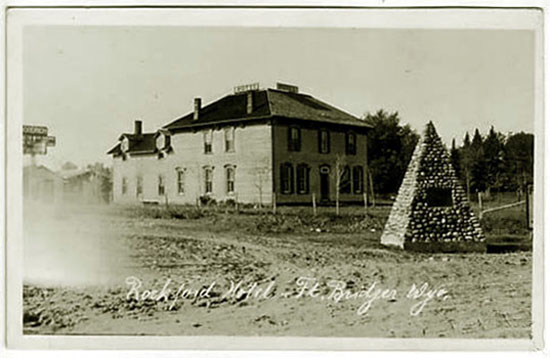
Rochford Hotel. What looks like a widow's walk on the roof is signage for the hotel.
The stone monument was constructed by citizens of the community in 1914.
Among the fixtures sold when the fort was abandoned by the Army was the Commanding Officer's Quarters which was relocated. In 1909, Judge Carter's son,
W. S. Carter, sold the building to Timothy W. Rochford (1865-1916) and Margaret Jane Rochford (1864-1942) who operated the building as a
hotel. After Timothy Rochford was killed in a dynmite explosion in Libby, Montana, Mrs. Rochford continued to operate the
property. The hotel was ultimately dismantled and has now been reconstructed as a part of the state park.
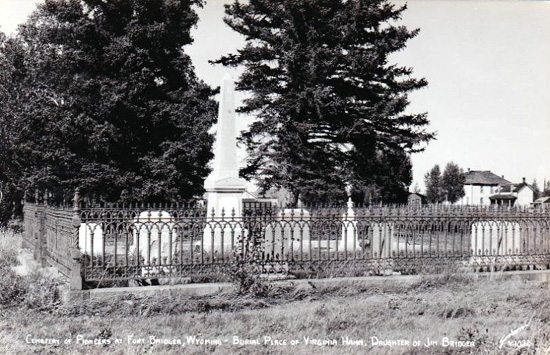
Carter Family Cemetery, Fort Bridger. Right background, Rochford Hotel.
It will be recalled that the military cemetery was closed. In 1933, the Carter Family Cemetery was established on the
grounds of the Fort.
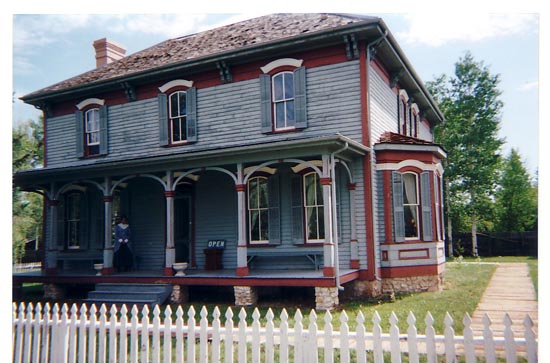
Reconstructed Commanding Officer's Quarters, Ft. Bridger, 2003. Photo by Geoff Dobson
With the advent of the Lincoln Highway, in 1926 the hotel business was expanded with the opening of a cabin court and
motel which operated until 1936. In 1928 When the State acquired portions of the fort, Other portions remained in
private hands and presented a less than glorious appearance to the passing motorists.
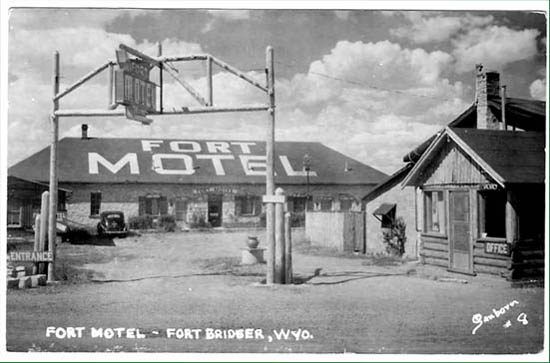
Fort Motel, approximately, 1936. Photo by William P. Sanborn.
The cabin court, itself, has now also been restored as the Black and Orange Cabin Court just to the east of the State Park.

Museum, Fort Bridger, 1940's. Photo by William P. Sanborn.
As previously indicated, the museum has been moved into the Commissary Building.
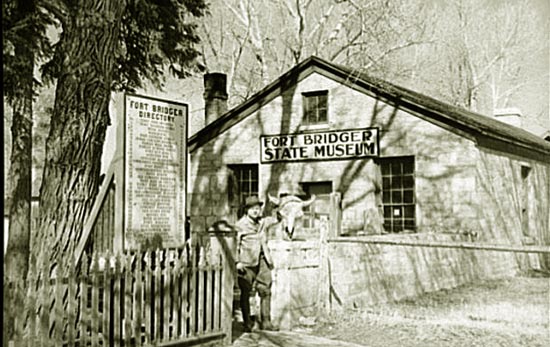
Fort Bridgr Museum, 1940. Photo by Arthur Rothstein

Fort Bridger, approx. 1940, new Guard House on right, Commissary on left. The Commissary now houses the museum.
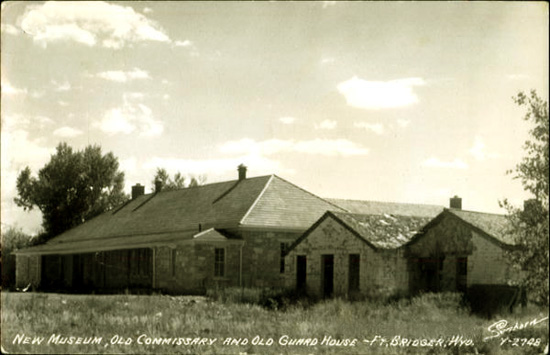
Fort Bridger, new museum, old guard house on righ.
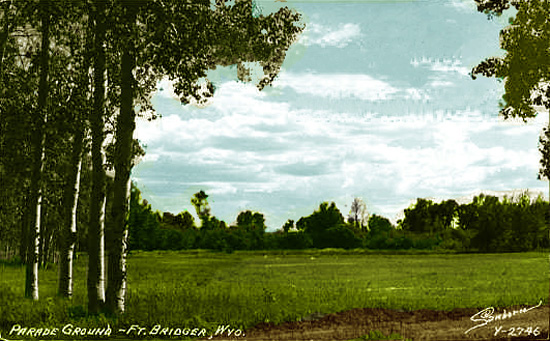
Fort Bridger,Parade Grounds, approx. 1950
Next page: The Oregon Trail.
|